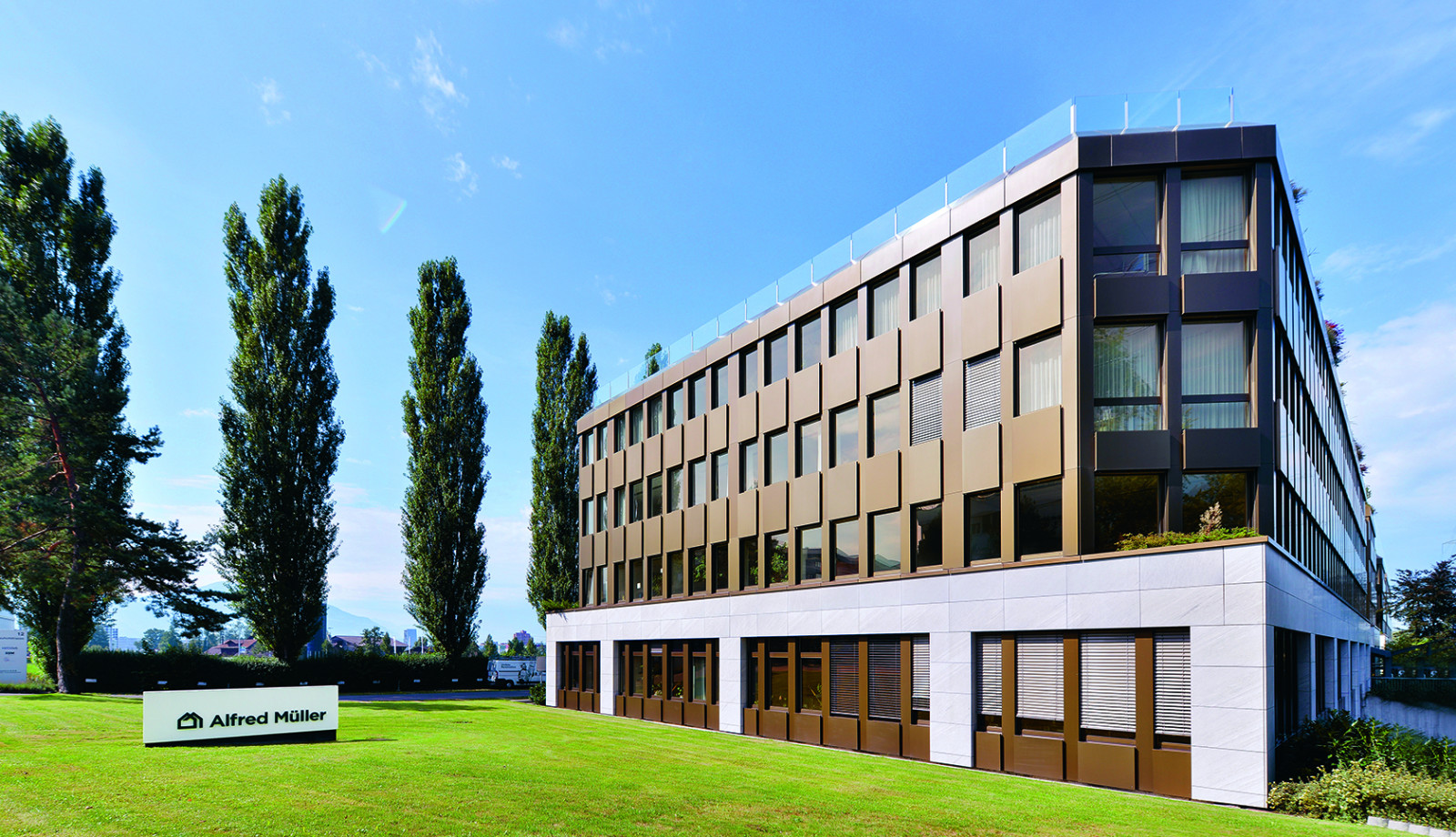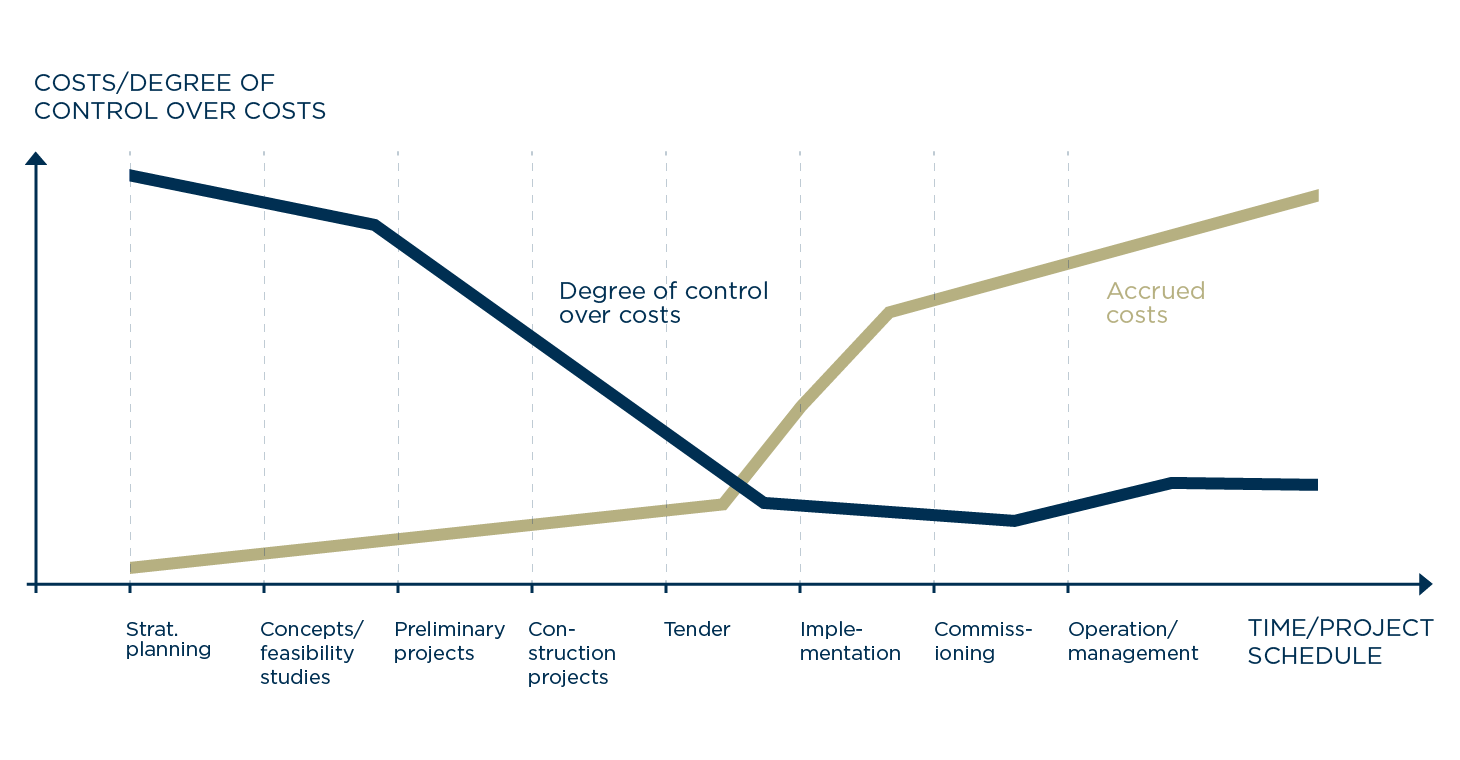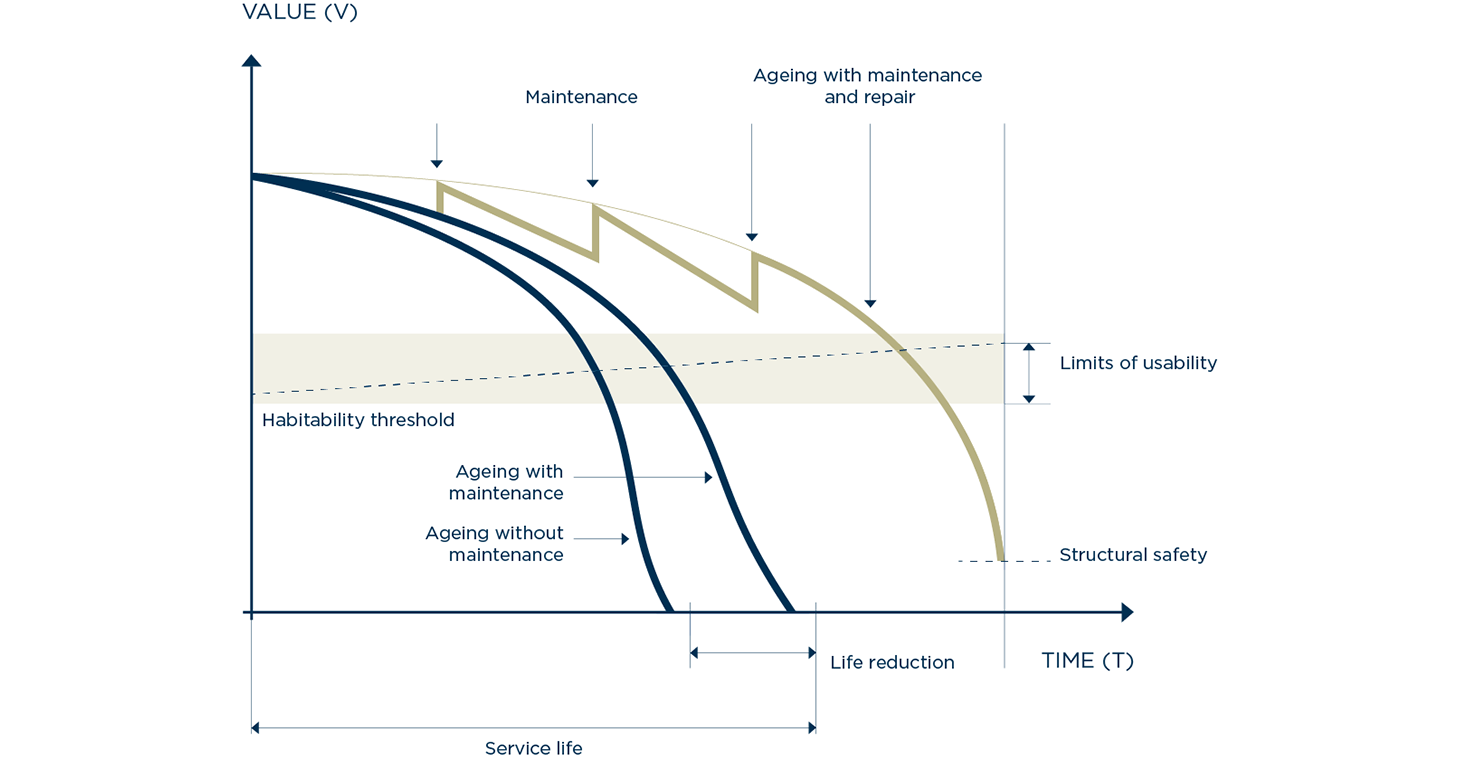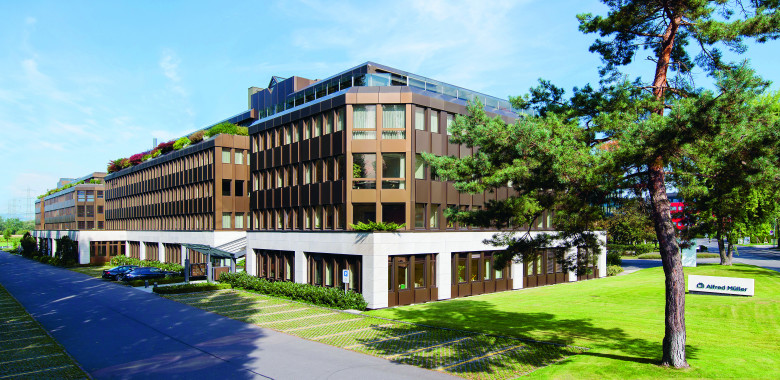
Good care makes buildings last longer
Alfred Müller AG manages around 760 000 square metres of office and commercial space as well as 4 600 rented apartments and private homes. Maintaining building envelopes is integral to technical management and calls for special Expertise.
A building envelope is a complex system of components and layers. The term building envelope includes not only the vertical façade but also flat and sloping roofs, windows and skylights, doors and entry portals, connectors and joints. Every one of these building elements must withstand changing temperatures, wind, snow and the physical requirements of the structure. For example, the heat insulating layer must act as a passive store of incident solar energy in winter and as protection against hot sunshine in summer. In light of these contrasting characteristics and the variety of elements involved, there is need for systematic maintenance and joined-up thinking by building managers. After all, the envelope is a building's calling card and hence a particularly strong focal point.
Maintenance starts at the conception phase
The belief that maintenance only begins when a building is operating misses a large slice in the life cycle of a building and its envelope. The initial phases of project development are especially decisive to determining future operation and maintenance. These will also come markedly to bear on both life cycle costs and the building's overall success (see Fig. 1).
Considered over a building's entire working life, investment costs (planning and implementation) account for just 20 percent or so of life cycle costs, whereas operating and maintenance costs make up about 80 percent of the total. It follows that the project definition phase holds great sway over optimal operation and management. Alfred Müller AG sets great store by a holistic view of the life cycle as the company's in-house resources cover all areas of expertise from project development through to implementation and later management.
The real estate management staff bring their long-standing experience into the development process as early as possible. «We focus on the longevity of materials and the fact that they require little upkeep and are easy to service as a means to hold down operating and maintenance costs,» points out Walter Hochreutener, Head of Real Estate Management. «A high degree of functionality can save a huge burden of work later on,» adds Markus Grimm, Head of Operations and Management.
Reconciling disparate interests
But it is not only the building managers' opinion that plays a role in selecting materials. Clients, architects and project developers are also significant influencers, with economic and marketing aspects having a large say in their decisions. So finding a good balance between these disparate interests and needs matters a lot, explains Walter Hochreutener. Moreover, he says, professional and materially competent design, together with ease of access for maintenance work, matter more than specific material choices. And considering that the building envelope will be relentlessly exposed to the elements, weather-protecting the building becomes a major aspect where certain materials are concerned. The fact that the Baar-based real estate company only manages properties that it previously built as the general contractor brings a valuable knowledge edge when it comes to later maintenance.
Professional maintenance pays off
High build quality, low investment costs and short construction time are only some of the factors for a successful property. Just as important is professional management while the structure is in use. Buildings last longer when they are regularly maintained in a manner that takes account of the materials used in their construction and when appropriate measures are taken at the right times. This is where Alfred Müller AG pursues a clear and long-proven strategy of value-retaining and value-adding maintenance.
But taking the right measures at the right time is not always easy. «One foremost duty of a building manager is to identify when something is wrong with a property and take appropriate action. In case of doubt, consult with the specialists,» stresses Markus Grimm. The people responsible rely on visual checks during property visits and support from janitorial staff. They make an inspection tour of every property at least once a year and their findings provide a planning basis for short-term maintenance measures. Dirt and discolourations, joints, connections and the plinth of the building receive particular attention. The inspection tour also covers flat roofs and roof structures. Detecting early signs of deterioration is crucial to preventing much more serious damage later on.
The managers perform systematic in-depth checks every five years. Their findings feed in to a building component report that provides a basis for longer-term maintenance planning. When larger and more complex structural measures are pending, management can turn to the construction specialists in the rebuilding and renovation department. They take over especially when multiple different types of work need to be done or in case of a major-cycle refurbishment. Customers benefit from Alfred Müller AG employing numerous specialists under one roof whose collective expertise covers every step in the life cycle of a building envelope.
For new buildings, Alfred Müller AG frequently agrees a maintenance contract with the company responsible for producing the building envelope. In addition to a guarantee that might extend beyond the customary terms set out by the SIA (Swiss Society of Engineers and Architects), managers can rest assured that the building envelope will be regularly checked and expertly maintained. For example, this may include regular cleaning of façade elements, minor repairs to maintain appearance, sealing or impregnation depending on the type of façade, annual maintenance of green roofs and cutting back surrounding shrubs at ground level. A maintenance contract like this also makes sense for somewhat older buildings. Indeed, recurrent work is indispensable for maintaining value.
Every building envelope needs individual assessment
In the experience of Alfred Müller AG, façades with exterior thermal insulation get repainted every ten years or so. A glass or metal façade, however, will require cleaning and impregnation every five to seven years. Maintenance demands of windows and joints differ depending on the construction material and weathering effects.
The managers at the Baar-based real estate company do not keep statistics on which façade system is more economical. «Every building envelope is unique and must be assessed individually,» explains Markus Grimm. Weather conditions, environmental surroundings and how the building is used all bear differently on every building envelope. For example, the façade and roof of a building sited in a park or adjacent to woodland will likely become soiled much sooner than a building in an urban residential district. Geographical location also plays an important role. For example, the fog that frequently blankets Switzerland's central lowland plateau will impact quite differently from sunshine up in the Alps.



